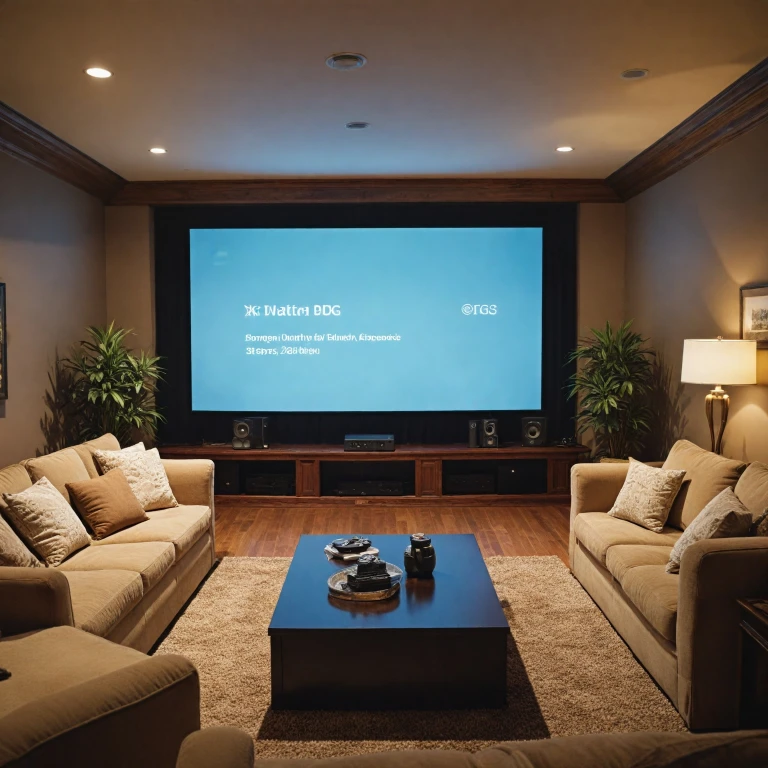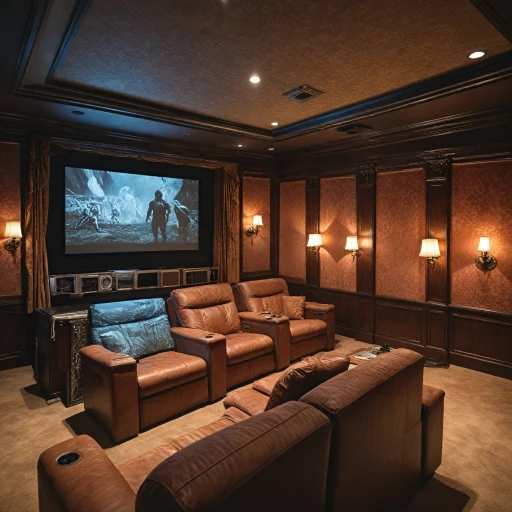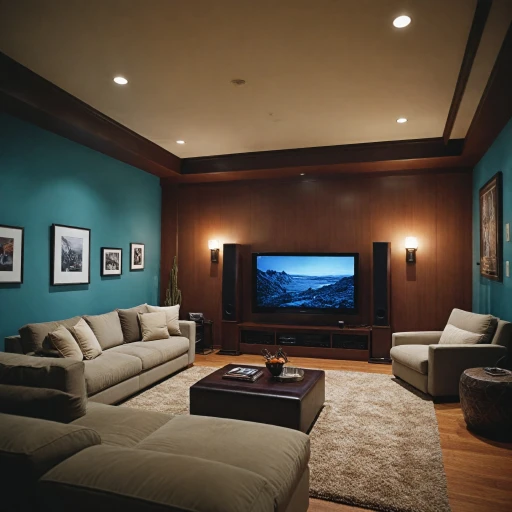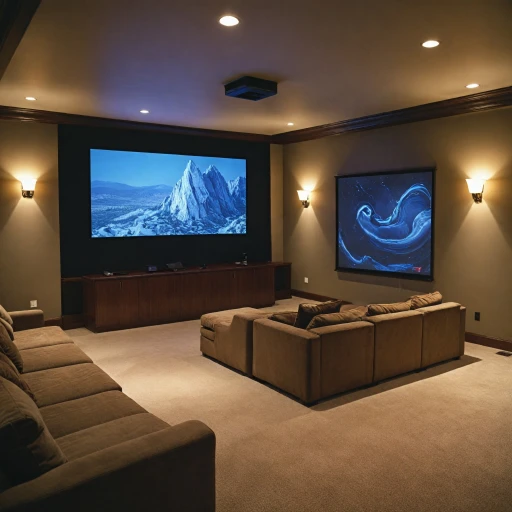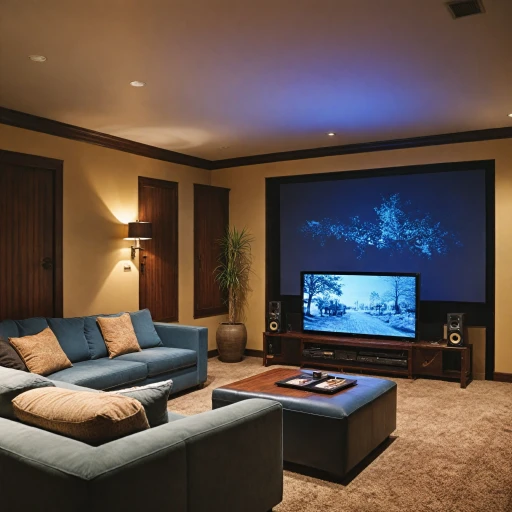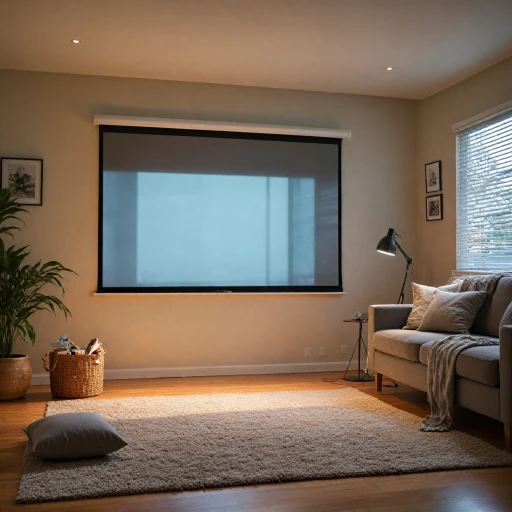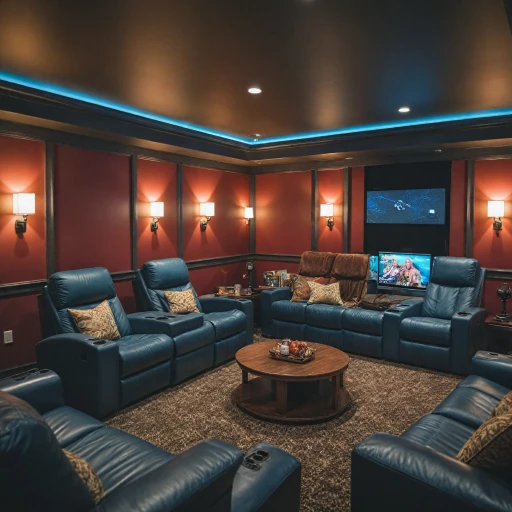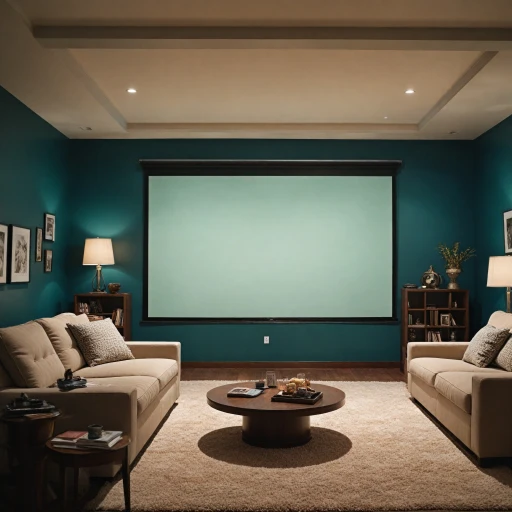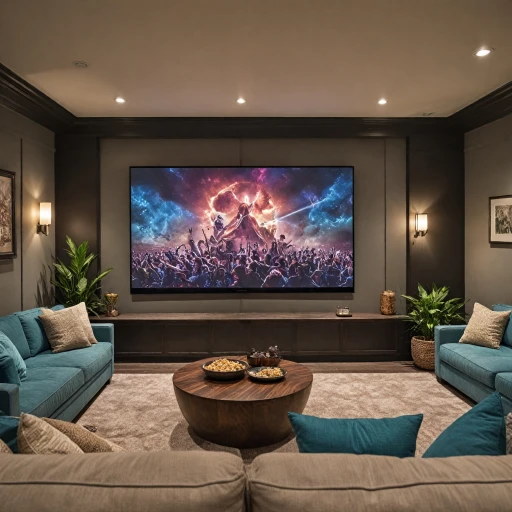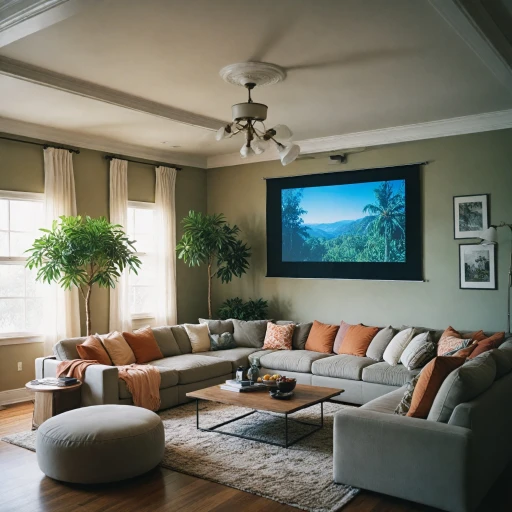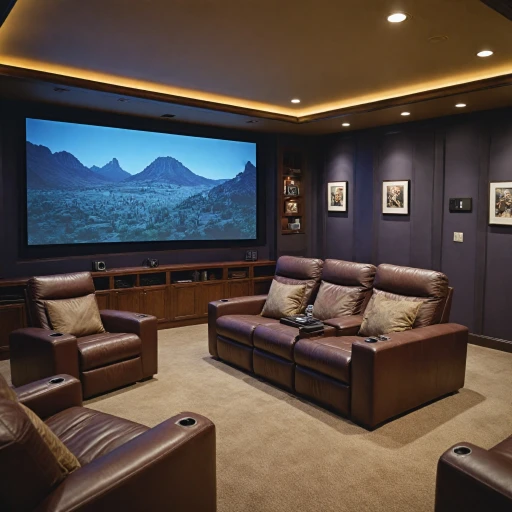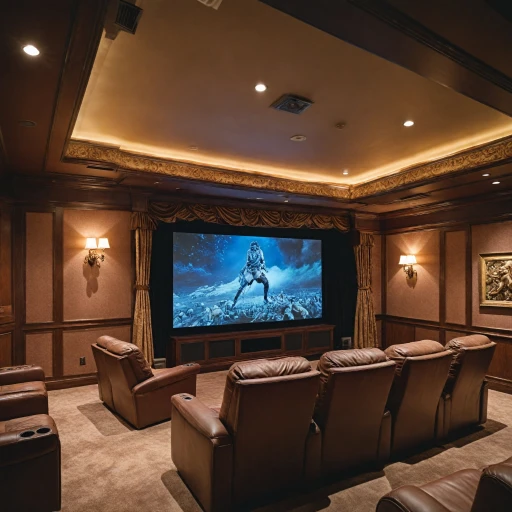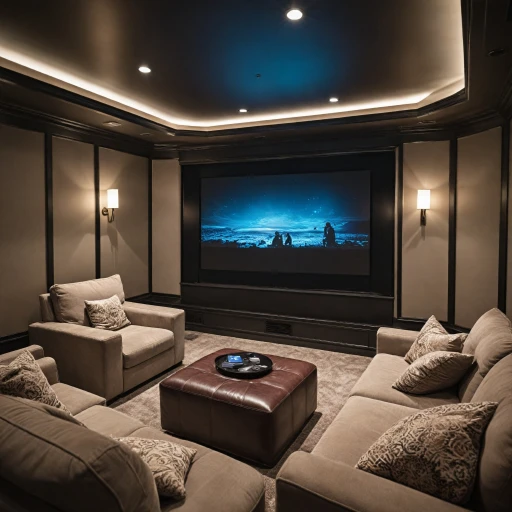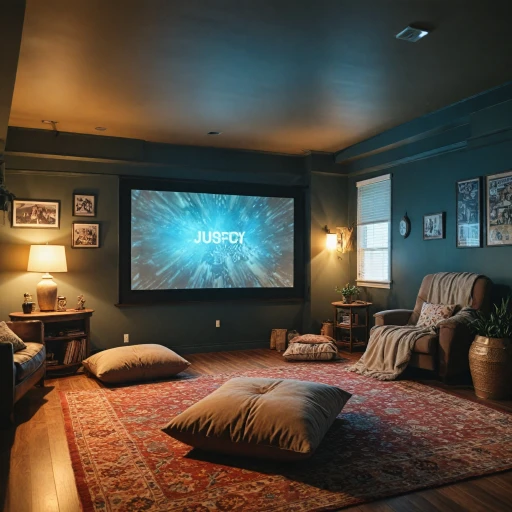
The Basics of VGA and HDMI Connections
Understanding the Connection Components
When setting up a home theater projector, it's essential to recognize the core differences and applications of VGA and HDMI connections. Both play pivotal roles in the seamless delivery of audio and video signals, but they do so in distinctive ways. VGA, or Video Graphics Array, has been around for decades, primarily catering to older computers and monitors. It focuses on transmitting video signals but lacks audio support, which can be a limitation in modern home theater setups. This is where the transition to HDMI, or High-Definition Multimedia Interface, becomes evident. HDMI cables and ports not only handle high-quality video signals but also manage audio seamlessly, offering a one-cable solution that's ideal for contemporary home theater systems.The Importance of Connectivity
The need for a VGA to HDMI converter arises when dealing with legacy devices that output video via VGA but need to connect to the more advanced HDMI inputs on projectors or monitors. This converter device efficiently bridges the gap, ensuring that your valuable older equipment remains compatible and functional. When opting for a VGA to HDMI adapter or converter, crucial considerations include whether the product supports audio transmission, as VGA natively does not carry sound. Look for models with an option for USB audio support to complement video signals. The variety of cables and ports must be aligned with your requirements. Most converters come with a male VGA input and a female HDMI output. Ensuring the appropriate plug-and-play configuration can prevent installation headaches. For those seeking to refine their setups, exploring wireless HDMI options can also enhance your home theater experience by reducing clutter and increasing flexibility. Enhance your home theater experience with wireless HDMI to uncover more options to modernize your setup.Why You Might Need a VGA to HDMI Converter
Understanding the Need for VGA to HDMI Conversion
When setting up a home theater system, one may encounter various devices and cables like HDMI, VGA, and even USB interfacing. HDMI is renowned for its ability to transmit both audio and video signals through a single cable, making it highly effective for modern setups. Meanwhile, VGA connections, though older, are still prevalent due to compatibility with many devices.
Sometimes, your existing products such as an older computer or a monitor may only have a VGA port while your home theater equipment is optimized for HDMI outputs. In such situations, a VGA to HDMI converter becomes essential. It not only bridges the connection gap but also allows the video signal from a VGA output to be formatted into HDMI, which is crucial when the device lacks a direct HDMI support.
The Role of Converters and Adapters
Converters and adapters play a vital role, especially in setups where you need to transmit content from a device with only a VGA port to an HDMI input. These converters often come in black and may feature various ports to handle different input and output types, such as VGA male and HDMI female ports. Some advanced converter products may also support audio by providing an additional input for USB audio, ensuring that your video comes with accompanying sound through the converter's audio support features.
Moreover, converter scalers are available for scenarios where there is a need for scaling the video signal resolution to match the display device. Especially in the United States where devices might have different specification standards, choosing the appropriate converter product ensures the best picture and sound quality.
Hence, using a conversion device ensures steady output HDMI quality by maintaining compatibility within your home theater setup. Remember, while converters translate signals for successful transmission and ensure compatibility, quality concerns like the cable and connection stability shouldn't be overlooked.
For those interested in perfect sound experiences alongside video transmission, integrating appropriate cables, and ensuring audio output needs are met, choosing the right cables for sound systems is equally critical.
Choosing the Right VGA to HDMI Converter
Selecting the Best Converter for Your Setup
Choosing the right VGA to HDMI converter is crucial for ensuring a seamless transition from analog to digital signals, which is essential for a high-quality home theater experience.- Compatibility Check: Ensure that the VGA to HDMI converter is compatible with both your output devices such as computers with VGA ports and your display devices, such as projectors with HDMI inputs. The converter should smoothly connect a male VGA to a female HDMI without compromising video or audio quality.
- Audio Support: Look for a converter that offers audio support to ensure your home theater system delivers both video and sound through the same HDMI cable. Many products on the market now come with either a dedicated audio port or a built-in audio adapter.
- Quality of Components: The build quality of the converter matters. A well-constructed product will handle the video signal efficiently, preserving the integrity of your content. Converters made with durable materials, like the black HDMI converter adapters, are often preferred for their reliability.
- Ease of Installation: Opt for converters that offer plug-and-play functionality. This makes setup straightforward, reducing the hassle involved in integrating your new technology. Consider products that come with USB power support for additional convenience.
- Extra Features: Some converters function as a converter scaler, which can enhance the output HDMI quality. This feature is useful if you’re dealing with different resolutions and want to optimize your display.
Installation Tips for VGA to HDMI Converters
Simple Tips for Setting Up Your VGA to HDMI Converter
Once you've chosen the right VGA to HDMI converter for your home theater projector, it's time to install it. Setting up your converter properly will ensure a seamless connection between your devices. Here are some straightforward guidelines to help you get started:
- Check Your Ports: Before you begin, ensure that your projector, computer, or any other device supports the necessary audio and video formats. You'll need a HDMI port on one end and a VGA port on the other to accommodate the respective cables.
- Connect the Basic Cables: Start by connecting the VGA cable from your computer to the converter's VGA female input. Then, connect the HDMI cable from the HDMI output of the converter to your monitor or projector.
- Power the Converter: Many converters, especially those with audio support, require additional power. If your model has a usb audio or power cable, plug it into an available USB port or power source. This step is crucial, particularly for upscaling video signals.
- Adjust Video Settings: After connections are secured, turn on your devices. You may need to adjust output settings on your computer or monitor to match the converter's format. Verify that both audio and video signals are transmitted correctly.
- Test and Troubleshoot: If you're experiencing issues with signal transmission, recheck all connections. Ensure any necessary adapters are securely plugged in, and try restarting devices. If problems persist, refer to the common troubleshooting tips.
With these steps, coupling your VGA adapter with a HDMI converter becomes a less daunting task and helps in enhancing the home theater system's performance efficiently.
Troubleshooting Common Issues
Troubleshooting Steps for Smooth Connectivity
When dealing with VGA to HDMI converters in your home theater setup, encountering issues is not uncommon. Here are some troubleshooting tips to ensure seamless audio and video experience.
- Check All Connections: Start by ensuring that all cables and adapters are securely connected. This includes VGA to HDMI converters, HDMI cables, and any USB audio support. Ensure that ports, such as VGA and HDMI, are free of dust or obstructions that may affect the signal.
- Power Up the Devices Correctly: Some converter devices require external power from a USB. Ensure that the USB power source is connected and providing adequate power to the adapter. This is crucial for the proper functioning of the converter, especially the models with audio video output capabilities.
- Verify Input and Output Settings: Confirm that the input and output settings on your home theater projector and connected devices, like computers or other video sources, are correctly configured. The projector's input should match the output HDMI or VGA signals from the source device.
- Check for Signal Compatibility: If there is a problem with the video signal, verify that the VGA to HDMI adapter supports the resolution and refresh rate of your projector and source devices. Converter scalers included with some products might need adjustment.
- Inspect for Faulty Products: It is possible that the HDMI converter or any part of the HDMI adapter setup could be defective. Trying another product or checking the adapter with different devices might help identify faulty components.
- Firmware and Driver Updates: Check if your device or converter adapter requires firmware updates or drivers (for computer interfaces), especially if it involves USB inputs. Manufacturer support websites usually offer resources for updating their products.
By systematically checking these areas, most common issues can be identified and resolved promptly. For a hassle-free experience, ensure that you choose a VGA cable and accompanying accessories compatible with your setup, keeping adaptability in focus to support a variety of video signals and devices.
Enhancing Your Home Theater Experience
Boosting the Quality and Enjoyment of Your Home Projector Setup
Incorporating a VGA to HDMI converter into your home theater can considerably enhance the overall viewing experience. These devices enable seamless transitions from older VGA output sources to newer HDMI input ports, bridging the gap between different technology eras. Here’s how you can optimize your setup:
- Smooth Transition Between Devices: The integration of VGA to HDMI converters allows you to connect older computers or monitors that only have VGA output to modern projectors with HDMI input. This conversion ensures you still get quality video signals without the hassle of system incompatibility challenges.
- Improved Video and Audio Quality: Converters and adapters can facilitate better audio support and video clarity, ensuring that you don't miss out on quality when transitioning signals between devices. Be sure to choose products that support high-definition output and include audio support, which is essential for creating an immersive experience.
- Efficient Cable Management: An HDMI cable, paired with a converter, reduces clutter, providing you with the ability to manage cables effectively. Many adapters offer plug and play functionality, simplifying connectivity without constant adjustments, so you spend more time enjoying your setup.
- Versatile Connection Options: For setups involving both computers and display devices, having an HDMI to VGA converter on hand supports diverse product compatibility. With ports for USB audio and mini DisplayPort, these devices are invaluable tools for home theaters aiming to deliver crisp signals and fluid audio experiences.
- Reliable Product Selection: Choosing the right converter product is crucial. Look for ones built to handle complex signal conversions effectively, made by reputable manufacturers that ensure long-lasting performance.
With these practices and quality products, you’ll enjoy a home theater setup that supports a wide range of devices and delivers unblemished video and sound. By integrating your existing equipment into a cohesive system, you greatly enhance your viewing experience right from the comfort of your living room.
